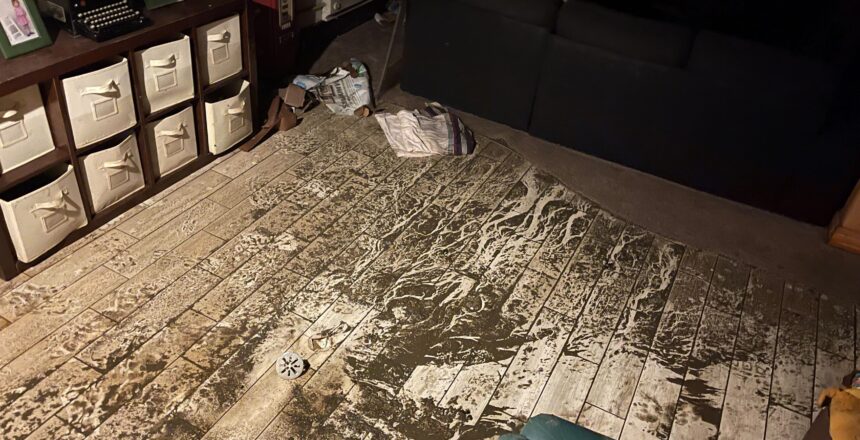Next steps following the flood in Detroit: Pro Tips for Basement Clean-up

To help save you time and trouble, I’ve checked with the experts and compiled some tips you may find useful. Thankfully, many of us are past the “standing water stage” but it still might be good information to keep in mind.
1. Don’t wade through the water (From DTE)
If your basement floods, you’ll likely have the urge to go through the water and try to salvage valuables or sentimental items. It’s important that you don’t. Even if your home has lost power, there’s still a chance you could be electrocuted in a flooded basement if someone is running a generator nearby, or if the power suddenly returns. Call your utility company to disconnect the home’s electric meter before making any moves. Customers should also stay out of damp basements if water is in contact with electric appliance.
2. Pump out the water (From DTE)
Once you’ve assured that the power is off, look for ways to get water out of the basement. Many times, water will begin to recede on its own but it’s also helpful to set up a system to get it out quicker. Be sure you’re pumping water far enough away from the house (and your neighbors’ houses) so that it doesn’t creep back into the foundation and back into the basement. Always use gloves in the process to protect your skin from any chemicals or contaminants that might have been mixed in the water and have patience if it’s a slow process.
3. Throw away all damaged electric equipment (From DTE)
An unfortunate reality is that after a flood, nearly all exposed electrical equipment is almost certainly ruined. Damaged appliances that have been flooded are extremely dangerous to operate and could present more risks than they’re worth. Items that will almost-always need to be replaced include: circuit panels and breakers, blowers and fans, fuse boxes, furnaces, boilers, air conditioners and more.
4. Protect yourself (From Basement Systems)
Flood water can contain hazardous materials, including raw sewage, chemicals, and pollutants. Regardless of the source of the water, put on waterproof boots, plastic or rubber gloves, and protective clothing before going into the basement. If you’re dealing with mold, FEMA recommends wearing gloves, goggles, and an N95 or N100 face mask that can be purchased at most hardware stores.
5. Dry out the basement (From Basement Systems)
Start the cleanup by removing the water from the basement. Mold can form within just 48 hours so it’s important to act quickly. Depending on the amount of water, you might use a wet/dry vacuum or a sump pump to remove the water. With a wet/dry vacuum, it can take several trips to empty the canister and a lot of time to remove even just a couple of inches of water.
Once the standing water has been removed, place large fans to help speed up the drying process. Invest in a basement dehumidifier to remove additional moisture and prevent mold. A SaniDry from Basement Systems features automatic drainage and controls so you don’t have to worry about emptying buckets of water or adjusting the humidity level.

